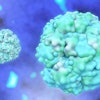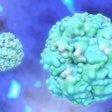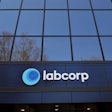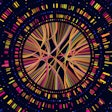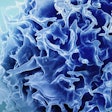
Molecular testing approaches such as next-generation sequencing (NGS) are outshining more traditional IVD products such as immunoassays with nearly triple the growth rate of the overall market, according to a new report from healthcare research firm Kalorama Information.
When molecular testing approaches were launched two decades ago, the conventional wisdom was that they would replace older testing methods. As it turns out, they have not. But the market for molecular diagnostics is worth some $8.7 billion and is experiencing growth that is above average for traditional IVD technologies, according to Kalorama's annual report on the world market for molecular diagnostics, published in June.
What's fueling the growth? A desire for better outcomes and accuracy, as well as more detailed identification of antigens, tumors, and mutations, helps explain the success. But the market is also getting a boost from improvements in molecular technologies, including a migration from methods such as in situ hybridization (ISH) and microarrays to sequencing systems, a trend that is likely to continue over the next few years.
Higher sensitivity and specificity offered by molecular diagnostic methods have affected the clinical diagnostic markets by addressing many unmet clinical needs. These products have penetrated into many other major IVD segments such as immunodiagnostics by offering unique and accurate insights.
And certain market segments -- notably blood screening, point-of-care (POC) diagnostics, cytogenetics, and tissue typing -- have been redefined in a major way due to advanced molecular methods.
Landscape is changing fast
Within the realm of molecular diagnostics, the landscape is changing fast as new technologies threaten to displace mainstays. Hybridization-based testing such as microarrays and ISH are being superseded in clinical practice by next-generation sequencing and quantitative polymerase chain reaction (qPCR) technology.
 Bruce Carlson of Kalorama Information.
Bruce Carlson of Kalorama Information.Nucleic acid microarrays are surfaces with dozens to thousands of microscopic spots, each populated by probes specific to one target sequence within a sample. Genotyping is the main clinical application of microarrays today in various application segments covering noninvasive prenatal tests, postnatal testing, tissue typing, and infectious disease tests, as well as patient genotyping related to pharmacogenomics or rare diseases.
Microarrays are cost-effective, but they have lost market share in many applications. Immucor's high-complexity molecular immunohematology kits are among the few U.S. Food and Drug Administration (FDA)-approved microarray test kits introduced in recent years. Though Agendia obtained FDA clearance for its MammaPrint molecular breast cancer expression profiling array in 2015, the company's IVD multivariate index assay (IVDMIA) is provided as a laboratory-developed test (LDT) performed in Agendia's U.S.- and Netherlands-based labs.
The array format has gradually been superseded in molecular hybridization assays by in situ methods and advanced hybridization technologies from the likes of NanoString and Luminex. Illumina, a major provider of microarrays, has supported the adoption of its sequencing technologies for noninvasive prenatal testing over its microarray solutions.
Automated services take hold
In situ hybridization refers to the direct probing without enzymatic amplification of nucleic acid targets within sample cells or tissue. The method typically utilizes a nucleic acid probe sequence attached to a reporter molecule to quantify and localize a target nucleic acid sequence (DNA or RNA) within a cell or tissue sample.
Protocols require a lot of hands-on time, and it usually takes at least half a day to obtain results. These results are determined by brightfield and fluorescence microscopy for chromogenic in situ hybridization (CISH) and fluorescence in situ hybridization (FISH), respectively. Thus, experienced personnel and professional interpretation of the results are required, often aided by automated image analysis software.
Sampling for these tests can also be difficult; for example, some prenatal FISH assays require samples of amniotic fluid. These factors coupled with the use of high-cost reagents make ISH assays expensive compared to other molecular diagnostic assays available in the market, such as PCR.
The trend now is to produce fully automated ISH systems to reduce the time and personnel required, improving cost-efficiency. Companies offering these automated services include Accelerate Diagnostics, Leica Biosystems in partnership with Advanced Cell Diagnostics (ACD), and Intavis Bioanalytical Instruments. Furthermore, ACD is focused on reducing the time and effort required to design ISH probes.
Sequencing leads future markets
Next-generation sequencing is also having an impact, according to Kalorama research. Future markets may be fundamentally remade as clinical sequencing becomes viable for testing in many application areas, including pathogen identification, comprehensive cancer testing, comprehensive genomic profiling (including inherited disease detection), and organ matching.
The first NGS system was approved for clinical use by the FDA in 2013, so the market segment is quite new, but a significant industry already exists for LDTs performed as testing services on NGS platforms by certified clinical labs. The current IVD market for clinical sequencing consists largely of sales of NGS systems to reference and specialty genetics labs, including instruments, library preparation, and sequencing reagents and consumables.
Currently, the NGS technologies mainly used in clinical laboratories are the Ion Torrent and Illumina systems. The Ion Personal Genome Machine (PGM) was launched in 2011 by Life Technologies (now part of Thermo Fisher). The more popular Illumina benchtops for diagnostic purposes are MiSeq (launched in 2011), MiniSeq (launched in 2016), and iSeq 100 (launched in 2017).
NGS is increasingly used for clinically heterogeneous inherited disorders, resulting in an increase in the number of reported disease-causing genes. Even though the majority of human inherited diseases involve variations in a number of genes, a few genes often interact, leading to overlapping pathological phenotypes. NGS is a powerful approach in the case of heterogeneous and complex diseases, such as in cardiomyopathies, where many genes are involved in a large phenotypic spectrum, because it allows testing of a large number of genes simultaneously in a cost-effective manner.
Are payors on board?
Cost has been one of the major limiting factors for the molecular diagnostic segment. As more and more molecular diagnostic tests are being introduced, reimbursement by payors has increasingly become uncertain. However, despite concerns about affordability and insurance coverage, the demand for molecular diagnostic tests is growing at a high-single-digit rate. This is particularly true in the case of tests used to guide patients to treatment with particular drugs based on their genetic profiles.
The rapidly evolving landscape of the molecular diagnostic market has offered tremendous challenges to payors, who have often withheld reimbursement based on a lack of evidence for clinical utility. While reimbursement is a concern across global markets, the U.S. has been at the forefront of developing policies that balance the concerns of diagnostic product vendors, healthcare providers, and patients. Hence, the reimbursement environment in the U.S. indicates how payors are adapting to the penetration of expensive molecular diagnostic methods and what new policies are likely to emerge, which may affect the policies of payors in other developed as well as emerging markets in the future.
Bruce Carlson is the publisher of Kalorama Information, part of Science and Medicine Group.
Disclosure: LabPulse.com is a sister company of Kalorama Information.
